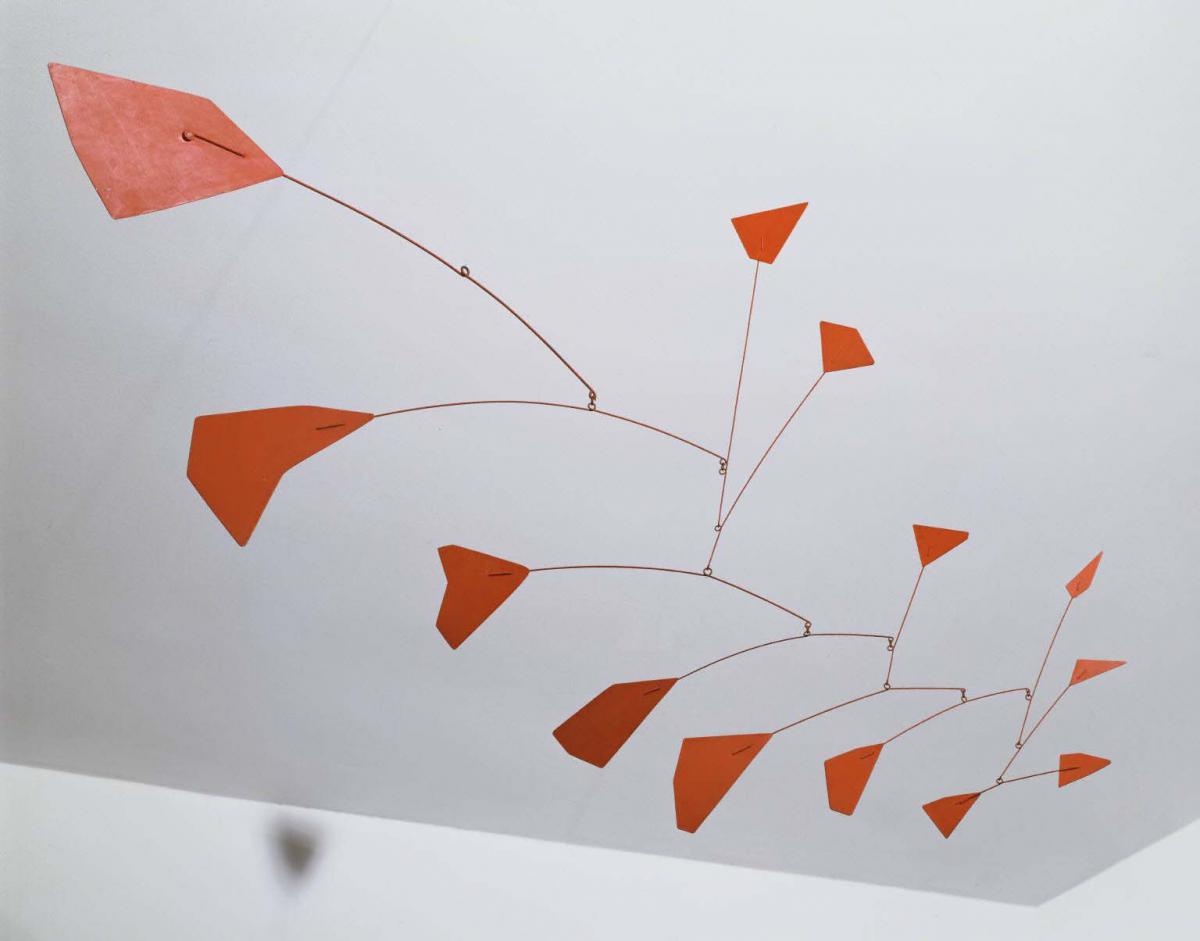Red Polygons
Alexander Calder ( c. 1950 )

One of the greatest sculptors of the Twentieth Century, Alexander Calder was born on July 22, 1898 in the Philadelphia suburb of Lawnton, Pennsylvania. He was a third generation descendant of a family of artists. After graduating from the Stevens institute of technology in 1919 with a degree in mechanical engineering, “Sandy” (as he was known by his friends) held down various jobs before entering the Art Students League of New York in 1923. At first a painter, he studied under Thomas Hart Benton, George Luks, Kenneth Hayes Miller and John Sloan, and was a classmate of John Graham. By 1928 Calder was exhibiting his first wire sculptures both in the United States and in France, and he was giving “performances” of his Circus, an entourage of wire animals and figures.
Calder is best known for creating the mobile, a type of sculpture that incorporates the qualities of time and space. Calder produced his first abstract wire sculptures in the spring of 1931, and by 1932 the artist was composing his forms with the intention of making them move through space. First he experimented with motorized sculptures but soon, by precisely adjusting the weight and balance of each shape, Calder produced works that floated through space, propelled only by air currents. A beautifully elegant mobile from the artist’s mature years, Red Polygons represents Calder’s desire to compose motion as one might compose color or form.